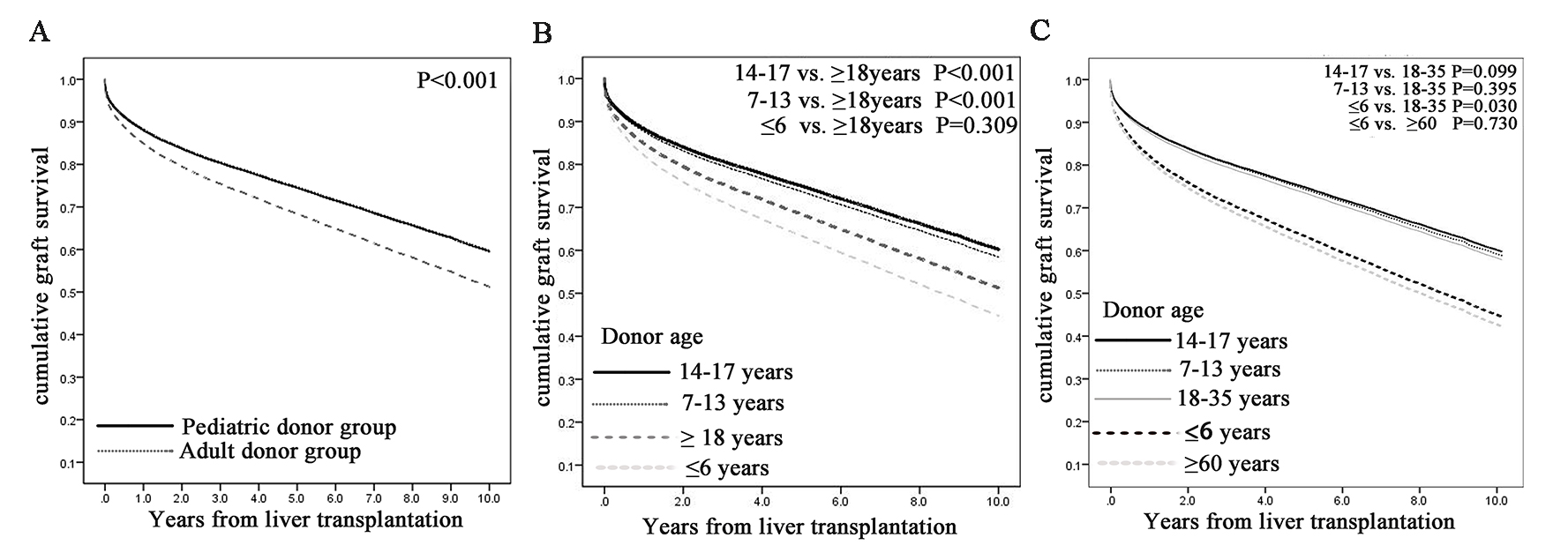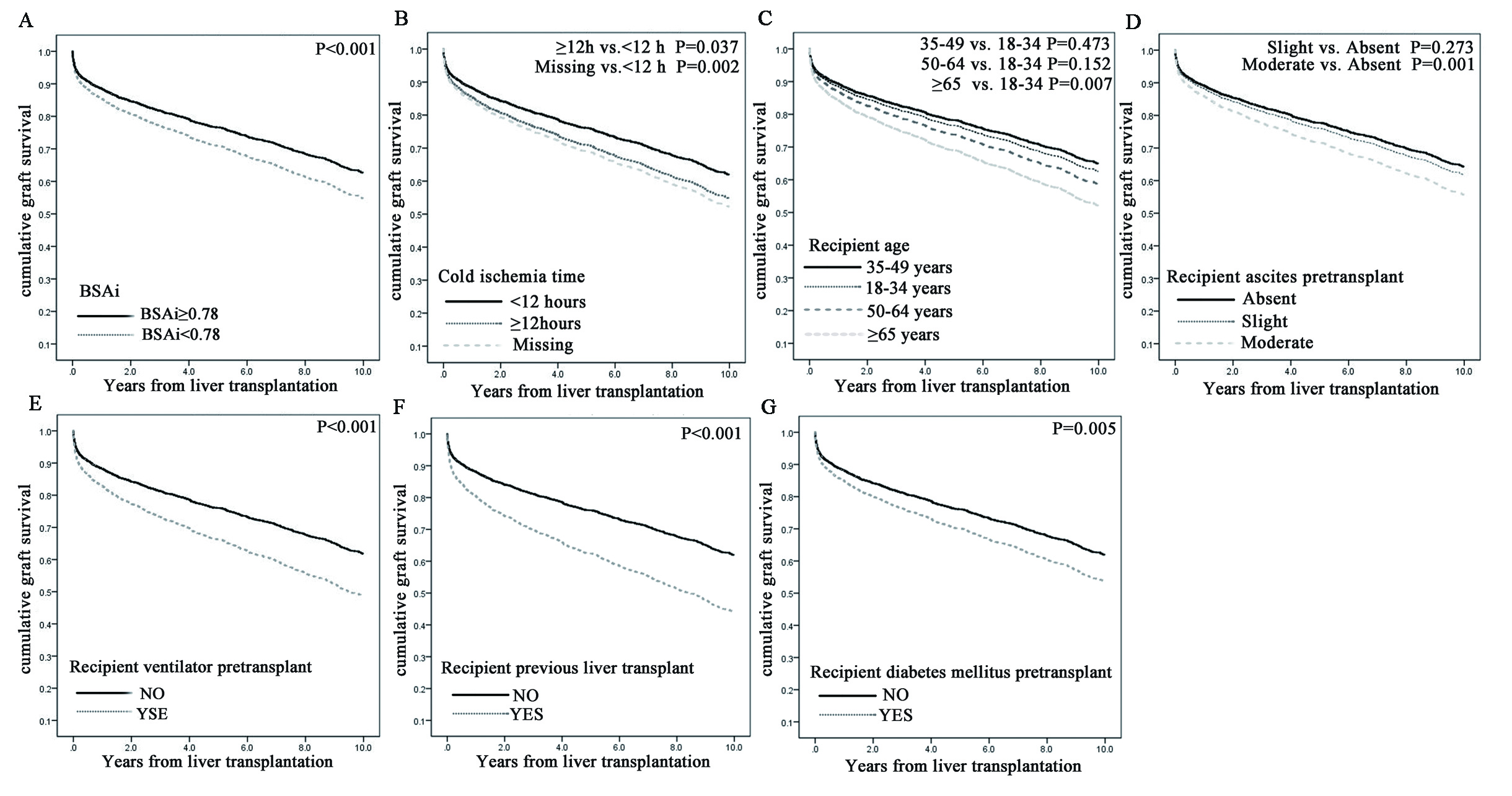Liver Transplantation Using Pediatric versus Adult Donor Grafts in Adult Recipients.
The First Affiliated Hospital of Sun Yat-sen University, Guangzhou, China
Meeting: 2017 American Transplant Congress
Abstract number: C182
Keywords: Allocation
Session Information
Session Name: Poster Session C: Organ Allocation, Meld Score, Organ Utilization, and Transplant Outcomes
Session Type: Poster Session
Date: Monday, May 1, 2017
Session Time: 6:00pm-7:00pm
 Presentation Time: 6:00pm-7:00pm
Presentation Time: 6:00pm-7:00pm
Location: Hall D1
Background: The reported outcomes of adult liver transplantation using pediatric livers are largely controversial based on single center studies. We aimed to answer this clinical question base on analysis of a large cohort using a nationwide database.
Methods: Retrospective analysis of the SRTR data from March 1, 2002 to December 31, 2014 identified 64380 deceased donor liver transplants. According to the donor age, 64380 cases were stratified into two groups: liver transplants with pediatric donor livers (donor age < 18 years) (PD group), and transplants with adult donor livers (age ≥ 18 years) (AD group). The graft survival was compared between the two groups using Kaplan-meier analysis. Multivariate Cox proportional hazard regression was used to identify independent risk factors associated with long-term graft survival.
Results: The cumulative graft survival at 1, 3, 5 and 10 years from liver transplant were significantly higher in PD recipients (87%, 80%, 74% and 60%) than in AD recipients (85%, 75%, 72%, 51%) (P<0.001).  Multivariate Cox proportional hazard regression analysis for graft survival for 10 years of follow-up in the PD group show that cold ischemia time ≥12 hours, and body surface area ratiocination (BSAi) <0.78 had a negative impact on graft survival. Recipient predictors associated with increased risks of graft failure after liver transplant included: ventilator pretransplant, previous liver transplant, moderate ascites pretransplant and diabetes mellitus pretransplant
Multivariate Cox proportional hazard regression analysis for graft survival for 10 years of follow-up in the PD group show that cold ischemia time ≥12 hours, and body surface area ratiocination (BSAi) <0.78 had a negative impact on graft survival. Recipient predictors associated with increased risks of graft failure after liver transplant included: ventilator pretransplant, previous liver transplant, moderate ascites pretransplant and diabetes mellitus pretransplant Conclusion: The use of pediatric livers in adults have a better long-term outcome compared with adult-to-adult liver transplantation, but the use of small pediatric donor livers aged younger than 6 years or with a BSAi<0.78 for adults should be considered only in emergent cases.
Conclusion: The use of pediatric livers in adults have a better long-term outcome compared with adult-to-adult liver transplantation, but the use of small pediatric donor livers aged younger than 6 years or with a BSAi<0.78 for adults should be considered only in emergent cases.
CITATION INFORMATION: Guo Z, Tang Y, He X, Chen G. Liver Transplantation Using Pediatric versus Adult Donor Grafts in Adult Recipients. Am J Transplant. 2017;17 (suppl 3).
To cite this abstract in AMA style:
Guo Z, Tang Y, He X, Chen G. Liver Transplantation Using Pediatric versus Adult Donor Grafts in Adult Recipients. [abstract]. Am J Transplant. 2017; 17 (suppl 3). https://atcmeetingabstracts.com/abstract/liver-transplantation-using-pediatric-versus-adult-donor-grafts-in-adult-recipients/. Accessed December 20, 2025.« Back to 2017 American Transplant Congress
